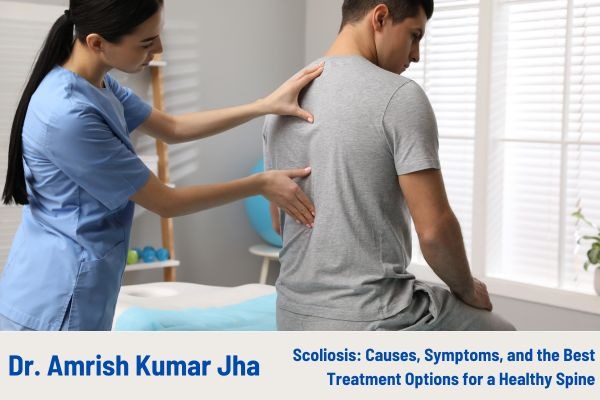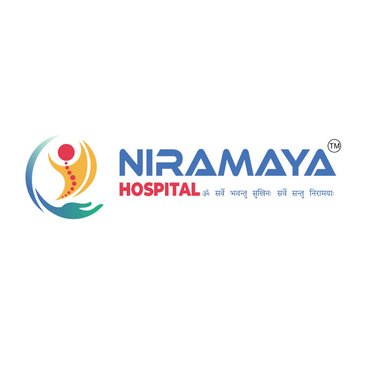Scoliosis: Causes, Symptoms, and the Best Treatment Options for a Healthy Spine
Scoliosis is a spinal condition that causes abnormal curvature of the spine, leading to discomfort, posture issues, and, in severe cases, complications affecting lung and heart function. This blog explores the causes, symptoms, diagnosis, and the most effective treatment options—both surgical and non-surgical—to help manage and improve scoliosis for a healthier life.
Dr. Amrish Kumar Jha
2/21/20252 min read


Introduction
Scoliosis is a spinal disorder that leads to a sideways curvature of the spine, often forming an "S" or "C" shape. While some cases are mild and require only monitoring, others can cause chronic pain, posture problems, and breathing difficulties. Dr. Amrish Kumar Jha, a specialist in spine health, shares valuable insights on diagnosing and treating scoliosis to help patients live healthier and more comfortable lives.
What is Scoliosis?
Scoliosis is a musculoskeletal condition where the spine curves abnormally. It can develop at any age but is most commonly diagnosed in adolescents. The severity of scoliosis varies, with some cases requiring minimal intervention and others needing surgical correction.
Causes of Scoliosis
Scoliosis can have different causes, including:
Idiopathic Scoliosis – The most common type, with no known cause (usually develops in children and teenagers).
Congenital Scoliosis – Caused by birth defects affecting spinal bone formation.
Neuromuscular Scoliosis – Linked to conditions like cerebral palsy, muscular dystrophy, or spinal cord injuries.
Degenerative Scoliosis – Occurs in adults due to age-related spinal degeneration and arthritis.
Traumatic Scoliosis – Develops after spinal injury or surgery.
Common Symptoms of Scoliosis
Uneven shoulders or hips
A visibly curved spine
Back pain or muscle stiffness
Reduced range of motion
Difficulty breathing in severe cases
How is Scoliosis Diagnosed?
Dr. Amrish Kumar Jha emphasizes the importance of early diagnosis through:
Physical Examination – Checking posture, shoulder alignment, and spinal curvature.
X-rays or MRI Scans – Used to determine the severity of the curve.
Cobb Angle Measurement – A tool to assess the degree of spinal curvature and treatment need.
Treatment Options for Scoliosis
1. Non-Surgical Treatments
For mild to moderate cases, non-surgical approaches can effectively manage scoliosis:
Bracing – Recommended for children and teenagers to prevent curve progression.
Physical Therapy – Helps strengthen core muscles and improve spinal alignment.
Pain Management – Includes chiropractic care, posture correction, and anti-inflammatory medications.
2. Surgical Treatments
For severe scoliosis (Cobb angle > 40-50 degrees), surgery may be required. Dr. Amrish Kumar Jha specializes in advanced surgical techniques, such as:
Spinal Fusion Surgery – The most common surgery that fuses vertebrae to stabilize the spine.
Minimally Invasive Surgery – Reduces recovery time and minimizes scarring.
Growth Rod Surgery – Used in young children to allow spinal growth while correcting the curve.
Recovery and Lifestyle Management
Post-treatment care is crucial for long-term spinal health. Patients should:
Engage in regular physiotherapy to maintain flexibility.
Follow posture correction techniques to avoid strain.
Maintain a healthy weight to reduce stress on the spine.
Conclusion
Scoliosis is manageable with early detection and expert guidance. Dr. Amrish Kumar Jha recommends a personalized treatment approach based on severity, age, and lifestyle. Whether through bracing, physical therapy, or surgery, timely intervention can significantly improve spinal health and overall well-being. If you or your child show symptoms of scoliosis, consult a spine specialist for a proper evaluation.
